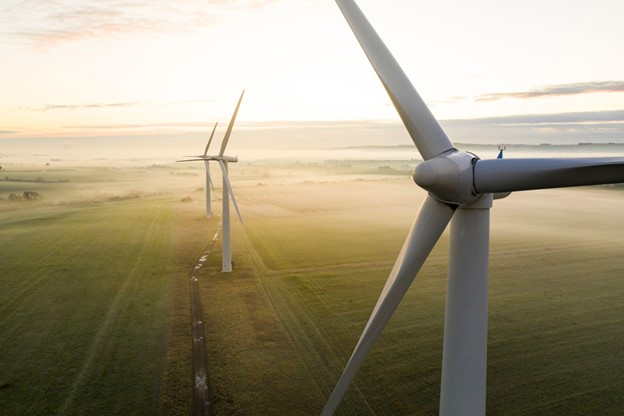Alternate Power Sources to Cope with the Increasing Demand for Electricity from Increased EV Sales
With climate change awareness at an all-time high, a worsening global energy crisis, and a growing movement towards environmental sustainability, it’s no wonder that EV sales continue to grow exponentially, year over year.
And while governments and society as a whole continue to encourage the adoption of electric vehicles over conventional vehicles, some interesting questions percolate to the forefront of the great EV debate: can the electric grid, as it stands today, support a large-scale transition to electric vehicles? Is there enough supply to meet the expected energy demands?

It’s no secret that electric vehicle adoption is at a sort of crossroads. Considering a vast majority of businesses and private citizens would opt to purchase an EV (all else being equal), one can’t help but wonder what the plan is for ensuring the millions of EVs rolling off the assembly line in the all too near future.
Understanding the Impact and Considering the Load Curve
As more and more all-electric vehicles take to the road, those responsible for producing and distributing energy need to have a strong understanding of the impact these vehicles will have on the demand for electricity. While it may seem logical that the electrification of transportation would drive demand for energy to outstrip supply, some analysis, like that completed by McKinsey & Company - a leading strategy and management consulting firm - suggests that this logic doesn’t necessarily hold water, at least in the short to midterm. Put more simply, there is reason to believe that an increasing number of electric vehicles will not automatically give rise to bolstering the electricity-generation capacity of the power grid. The analysis produced by McKinsey included an examination of Germany’s current EV environment to back up this claim. Germany, of course, is a global leader in the production of electric vehicles, second only to China. In fact, over 25% of the 4.1 million vehicles produced in Germany in 2023 leveraged an electric engine. Even considering the number of electric vehicles produced in Germany year over year, the analysis found that only a one percent increase in capacity (approximately 5 GW) will be needed to support the growing number of EVs by 2030. By 2050, an additional 20 GW in capacity will need to be added to Germany’s power grid. It is expected that Germany, given its considerable investment in renewable energy projects will be able to meet this increase handily.
The real challenge, according to the report, will be in reacting to a change in the load curve. Essentially, this would equate to being able to accommodate the number of vehicles being charged in the evening after they have been used to travel to and from work. Even then however, the impact on the wider national system will likely be negligible, as EV adoption rates will vary from one region to the next, and high-use areas being few and far between.
Hypothetically, What Happens if the Electricity Demand Exceeds the Grid’s Load Capabilities?
What if, hypothetically speaking, the German experience is not a typical one, but rather an outlier? What if EV adoption is estimated to be so widespread that it outpaces a system’s ability to add electrical capacity using conventional sources? In this particular scenario, it would be in a nation’s best interest to invest in and green light an appropriate number of renewable energy projects in order to help meet the trending demand. This can include a combination of energy sources such as wind, solar, and hydro. While some may frown upon renewable energy generation as “too inconsistent” to be of any real practical use the data seems to suggest otherwise. In spite of that, the International Renewables Energy Agency (IRENA) estimates that renewable energy sources will represent approximately 90% of the world’s electricity generation by the year 2050.
Wind Power - Benefits and Impact to Capacity
In addition to being a clean and inexhaustible energy source, wind energy is also the most widely used, established, and efficient renewable energy source. Wind turbines are used to convert wind energy into electrical energy. In terms of placement, wind farms can be placed both on land and at sea and are ideal for providing electricity to remote communities. Currently, wind energy makes up about 7.8% of the global energy production, but some estimates expect that percentage to grow to between 18 and 35% by the year 2050.
Solar Power - Benefits and Impact to Capacity
Like wind energy, solar power generation is a clean and inexhaustible resource. The amount of solar energy that reaches the earth daily is theoretically enough to meet the entirety of the planet’s energy needs - and then some. From a practical perspective, solar energy collection becomes less efficient under cloud cover, making this energy resource slightly less reliable than wind. Having said that, leveraging surfaces like parking lots, roadways, roofs etc. with solar farms is a good way to hedge against a cloudy day. Currently, solar energy makes up about 5.5% of the global energy production, with some estimates putting that percentage up to 25-50% by 2050.
Hydro Power - Benefits and Impact to Capacity
Rain or shine, hydro power generation provides a consistent level of capacity relative to other renewable resources. Though the initial cost may be prohibitive, existing infrastructure such as bridges can be leveraged when constructing a hydroelectric facility. Current estimates indicate that hydro power makes up about 15% of the global energy generation. By 2050, this percentage will remain around the 15% mark however considerable growth in hydro power generation is expected in the Asia Pacific Region.
Technical Opportunities That Can Be Leveraged
Fortunately, we live in a golden age of technologies that can help make the most out of these renewable sources - wind turbines, solar panels, hydro electric facilities - all of which are constantly being iterated upon. That being said, there is and there will continue to be an increasing demand for technicians that can install, service, and repair the equipment that will be used to power the growing number of electric vehicles. Put simply, the challenge associated with an increasing reliance on renewable energy sources is not just about ensuring they can meet the current and future energy needs, it’s also about embracing a paradigm shift in the workforce.
As new projects are green lit and as investment continues to pour into the green energy sector, energy producers and distributors will need to prepare for the considerable workforce that will be needed to build the new onshore and offshore wind farms, solar farms, and hydro-electric plants. Considering the growth each of these segments is expected to experience over the next several decades should translate to considerable opportunity for maintenance and service technicians.
The Power Grid will be Able to Handle the Next Gen of EVs
It’s not unreasonable for the layperson to worry about the power grid’s ability to support a transition to a fully EV fleet. Considering everything from depleting non-renewable energy sources to climate change, it’s understandable that some believe that the power grid, as it stands today, will not be ready to support an energy ecosystem where renewables do much more of the heavy lifting.
And yet, the data supports the idea that by continuing to develop innovative technologies and investing in the infrastructure that not only will renewable energy capacity increase, it is feasible that one day renewable energy sources will provide all of the global energy needs.
If you would like to learn more about how you can make an impact in the renewable energy sector, speak to a Program Consultant at George Brown College today by dialing 1-888-553-5333.
